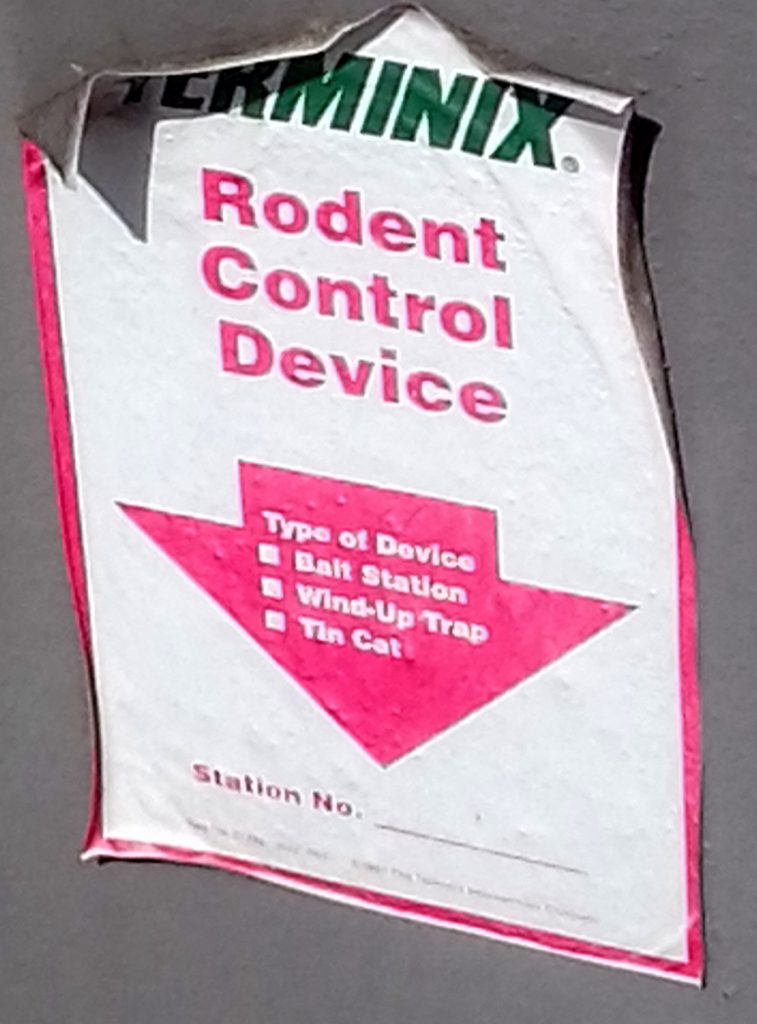
One of my father’s favourite bits of advice was “eschew obfuscation”, which, of course, was obfuscating in its own right.
I happened across this sign recently. Rodent Control Device, it said. Not Rat Trap. And yes, it does go on to list a number of devices that they might be using, but it did make me chuckle.
It got me to thinking of how many times documents cross my desk swollen with $20 words when a couple of 15-cent words would do just fine. The urge to show off your vocabulary is almost irresistible, that’s for sure. Just listen to our politicians speak.
But when we write, we write to be understood, not to impress others with the fabulousness of our expansive and sagacious verbosity. At least, I hope not! We write to communicate.
So keep it simple. Ask yourself, what’s the easiest way I can put this? How do I get my reader to understand what I want to say without reaching for a dictionary? Do I really need to construct elaborate sentences with multiple subordinate clauses? How long do those paragraphs have to be? Is there a new law against white space? And unless you’re being paid by the word—well, even if you’re being paid by the word—try to curb your enthusiasm. I know a blank page can be daunting, and anxiety propels us to fill it, but it’s better it be half-filled with something of value than full of sound and fury, signifying . . . well, you know.
One tool I find useful is the Flesch Reading Ease and Flesch-Kincaid Grade Level tool in Word. You’ll find it under File – Options – Proofing. It helps you check the readability of what you’ve written using a sophisticated algorithm and gives you the relevant scores.
The Flesch-Kincaid score corresponds to the reading age or US grade level a person would need to read your piece. The Flesch score tells you the percentage of people who you can expect to easily read it. You want to keep your piece at around Grade 8, or age 14 or so, and around 60% or more, or you’ll start losing us as readers. The tool also gives you helpful info like number of words per sentence, sentences per paragraph, and the percentage of passive sentences.
What it boils down to is this: Use shorter words in shorter sentences. Obfuscation represents a lack of self-control . . . or an over-abundance of vanity. Neither is a good thing. Learn to throttle yourself back—and call a rat trap a rat trap
For more about the Flesch and Flesch-Kincaid scales, check out these websites here and here.
Excited to hear your point of view. Please leave a comment below.

I just ran a test on the draft of my new novel, The Irresistible Mr. Cooper. Reading ease score of over 80%! So pleased!